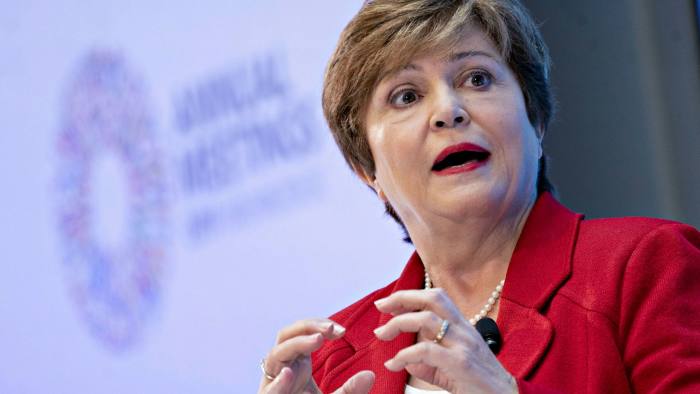Managing Director of the International Monetary Fund(IMF), Kristalina Georgieva, recently talked about digital currencies, including CBDC, in one of her recent speeches. The IMF MD gave this speech at the T20 Summit hosted by Bocconi University and Italian Institute for International Political Studies (ISPI) on Oct. 5. The submit included sessions with different policymakers and experts who discussed topics relating to various international challenges. The topics included climate and growth, international finance, trade and investments, digitalization, poverty, as well as inequalities.
Related Reading | World Bank, IMF Advocate For CBDC Adoption At G20
She said that more than half of the central banks in the world are at some stage of exploring Central Bank Digital Currencies (CBDC).
The IMF And CBDC
Georgieva said the IMF was looking at digital currencies as a whole from the perspective of macroeconomic and financial stability. This statement was in response to whether she considers digital and cryptocurrencies as potential threats to financial stability.
She remarked, “When we look at the world of digitalization, digital currencies, of course, are a very important part of it. Before the pandemic, we used to say the future is digital. With the pandemic, the future has arrived very prominently in the world of money,”
Total crypto market rises to $2.3 Trillion | Source: Crypto Total Market Cap from TradingView.com
Speaking about the opportunities, she says that digital currencies make it possible to transfer money seamlessly and at less cost. However, she continues, “we need to be clear about what we mean by digital money.” Georgieva further went on to call CBDC the most reliable form of digital currency. Her reason is that they have the “backing of the state” and are integrated into the State’s monetary policy.
Related Reading | Australia, Malaysia, Singapore, South Africa Set To Test Cross-Border CBDC
The Managing Director points out that the CBDC is still a novelty and, in fact, there is only one in existence. The Bahamas is the first and only country to have a state-backed digital currency. The Central Bank of the Bahamas launched the Sand Dollar (Bahamian CBDC) in October 2020. Despite the novelty, the exploration into CBDCs is moving rapidly. “we did a survey of our membership and it was very impressive. 110 countries are at some stage of looking into cbdcs.” she states.
She concludes on the adoption of CBDC with two questions. Firstly, how to guarantee interoperability of CBDCs. Also, how to make sure that the IMF coordinates globally the impact that they may have on monetary policy.
Other Digital Currencies
After speaking on CBDC, Georgieva moves on to other digital currencies. According to her, stablecoins have backing in assets and are liquid. Therefore, they fill the digital gap in privately issued money.
The third category of digital currencies she speaks about is cryptocurrencies like Bitcoin. She says that although it is called money, it is, in fact, a defacto asset. She also added that it is difficult to think of them as money. However, a Twitter survey conducted by the IMF some months ago had respondents support Bitcoin as money. Around 80% of the votes were in favor of crypto as money.
Related Reading | IMF Survey Overwhelmingly Supports Bitcoin As “Money”
The MD went on to say that to understand the risks, there is a need to differentiate between these three categories of digital currencies. She concludes by mentioning three issues to consider: trust, stability, and regulation.
Featured image by Financial Times, Chart from TradingView.com









